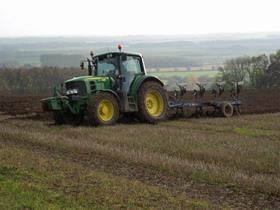
The income of Scottish farmers is estimated to have halved over the four years to 2014 due to lower market prices, favourable euro exchange rates and lower subsidy payments, new figures have shown.
Data from the Scottish government used surveys from 500 commercial farms for the accounting period 2014-15, and the 2014 crop year.
It showed that the average farm business income fell by a quarter between 2013 and 2014, to £23,000; the lowest level of Farm Business Income (FBI) since the measure was introduced.
The latest figures examine a number of financial indicators for the accounting period 2014-15, which focuses on the 2014 crop year. The results are based on annual audits of 500 commercial farms in Scotland.
The 2014 crop year benefited from generally reasonable weather, the report found, although market prices for cereals, potatoes and milk were down.
The main factor behind the recent fall in incomes was the reduced value of crops, which fell by £18,000 on average in the year to 2014. The lower value of subsidy payments, which was £7,000 lower on average, also played a large part.
Farm business income is the primary measure of farm level income in the UK but has only been calculated since 2009. A related measure, net farm income, has a longer series and shows the average income in 2014 was the lowest since 2005.
NFU Scotland director of policy Jonnie Hall said the news is “no surprise”. “It’s all about costs, markets and support. And for the vast majority of businesses across almost all sectors these three are conspiring to drag incomes down,” he said. “Continually rising input costs, both cost of production and compliance, and low and often volatile market returns have prolonged the cost-price squeeze that Scottish agriculture has faced for a number of years.
“In years gone by, direct support payments went a long way in plugging that gap. However, the gap is widening while support is reducing - from a reduced Common Agricultural Policy budget and an unhelpful Euro exchange rate.'



